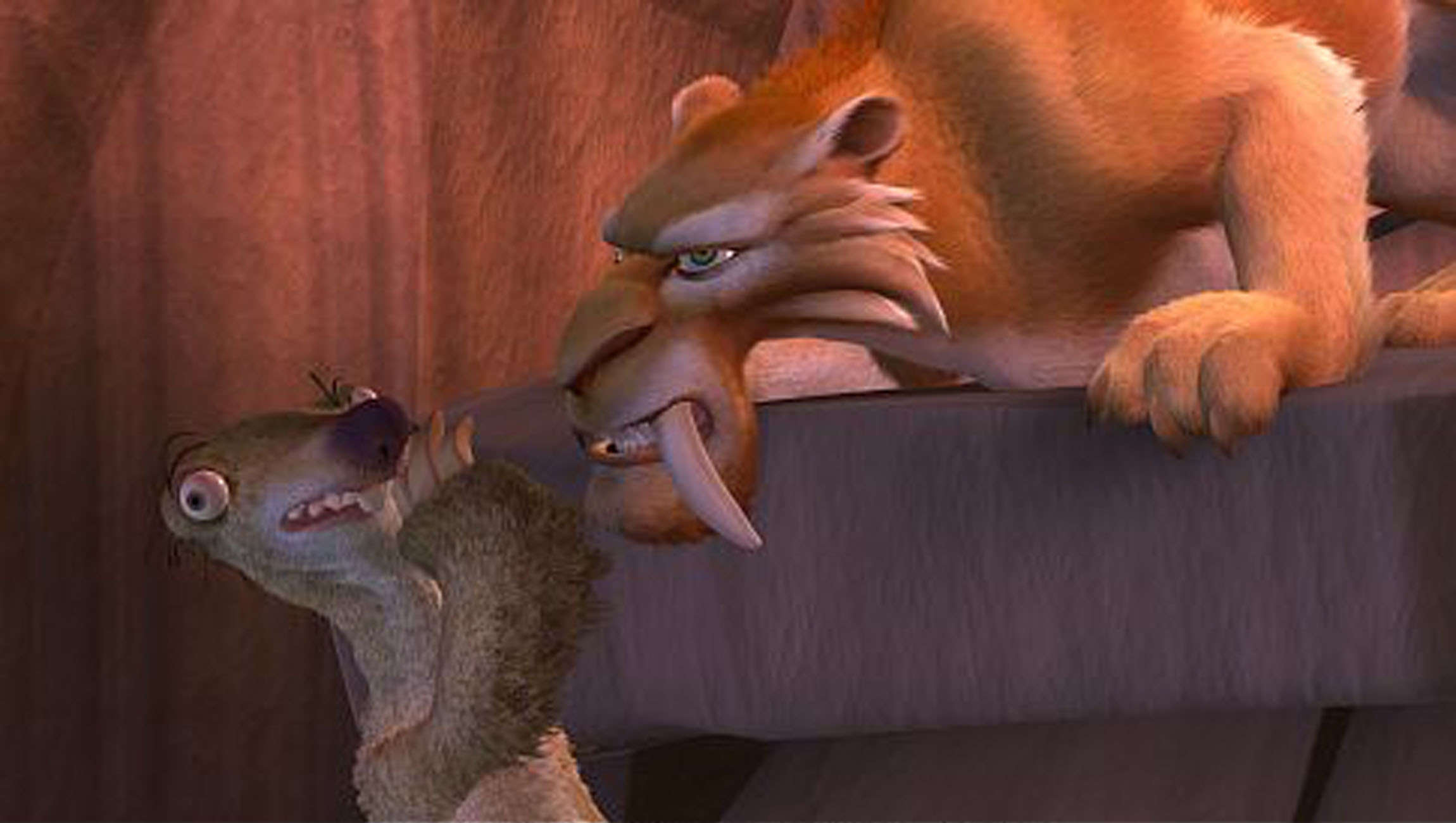Create a free profile to get unlimited access to exclusive videos, sweepstakes, and more!
Saber-toothed what? This prehistoric marsupial with monster teeth was much weirder than any big cat

When your name means “terrible pouched knife” and your teeth show it, you know you’re going to have a reputation.
Thylcosmius atrox roamed what is now Argentina 5 million years ago. It certainly looked like the saber-toothed cats of the Pleistocene era that ambushed their prey and slashed at it with the literal knives in their mouths. While scientists were previously able to distinguish this proto-marsupial, or metatherian, from actual prehistoric big cats like Smilodon fatalis, it had been believed until now that it was still a predator because its skeleton seemed to masquerade as one. Turns out those teeth were deceptively fierce—scientists have found that T. atrox was no predator.
“Despite its impressive canines, the 'marsupial saber-tooth' was not the ecological analogue of placental saber-tooths, and likely did not use its canines to dispatch its prey,” said Professor Christine Janis from Bristol’s School of Earth Sciences, who recently published a study in Peerj.
Evolution can be bizarre. Sometimes a phenomenon called convergent evolution makes unrelated organisms that have evolved differently appear to be related. Both animals end up evolving in a similar way, even though each evolves independently. This is the case with the marsupial T. atrox and the placental S. fatalis. Sometimes this is the result of genetic mutations. It most often happens because of adaptations to living conditions that are almost alike. Flight has evolved in everything from insects to bats to now-extinct pterosaurs, but the two saber-tooths were less easily distinguishable from their skeletons.
It was the form the teeth took, and not necessarily their size, that started to give away differences. S. fatalis and other species of saber-toothed cats all had front teeth that were literally shaped like daggers. They were flat on both sides, made for attacking prey in vulnerable areas like the throat. Their skulls were also made for bone-crushing and smashing that final deathblow. T. atrox was the misfit here. It had conical teeth that weren’t made so much for biting and slashing as they were for scraping out the flesh and innards of a ready carcass, making Janis and her team believe they were probably scavengers.
Adding to the scavenger theory is that T. atrox didn’t even have upper incisors. Despite monstrous canines that never stopped growing, this metatherian didn’t have the huge incisors that saber-tooth cats used to seize their prey and keep it where they wanted it. Its lower incisors were hardly even there. If it had any, they are lost to time, because they were certainly lost to the scientists. Its teeth were not even designed for predation. Where different Smilodon species had canines designed for stabbing, those of T. atrox were designed for more of a pull-back motion, suggesting opening a carcass or scraping out innards.
Besides teeth, there was an unexpected feature that proved there was no way T. atrox could have been equipped for predation. Its neck was too stiff. S. fatalis and its relatives had more flexible necks and stronger skulls that gave them bone-crushing action, but T. atrox had a more horizontal skull and neck alignment that wouldn’t have allowed them to pull backward and come down with a crush. However, it was ideal for scavenging.
“A more horizontal orientation of the head on the neck … would not be advantageous for flexing the head ventrally, as would be necessary for a predatory head strike, but might be advantageous for bracing the head on the neck while pulling back with the canines,” said Janis.
T. atrox was suited to a soft diet provided by kills that were left behind by apex predators, which included massive predatory birds (some even called "terror birds") along with saber-toothed cats. It is the inverse of the image of vultures circling remains left behind by a lion. Back then, at least where T. atrox lived, birds ruled when it came to hunting. Anything they left behind was fair game for scavengers. You can’t say the size of this animal was a disadvantage when it came to getting first dibs on dinner.
Would T. atrox have attacked a human? Probably not, but you still wouldn't want something that enormous to step on you.














